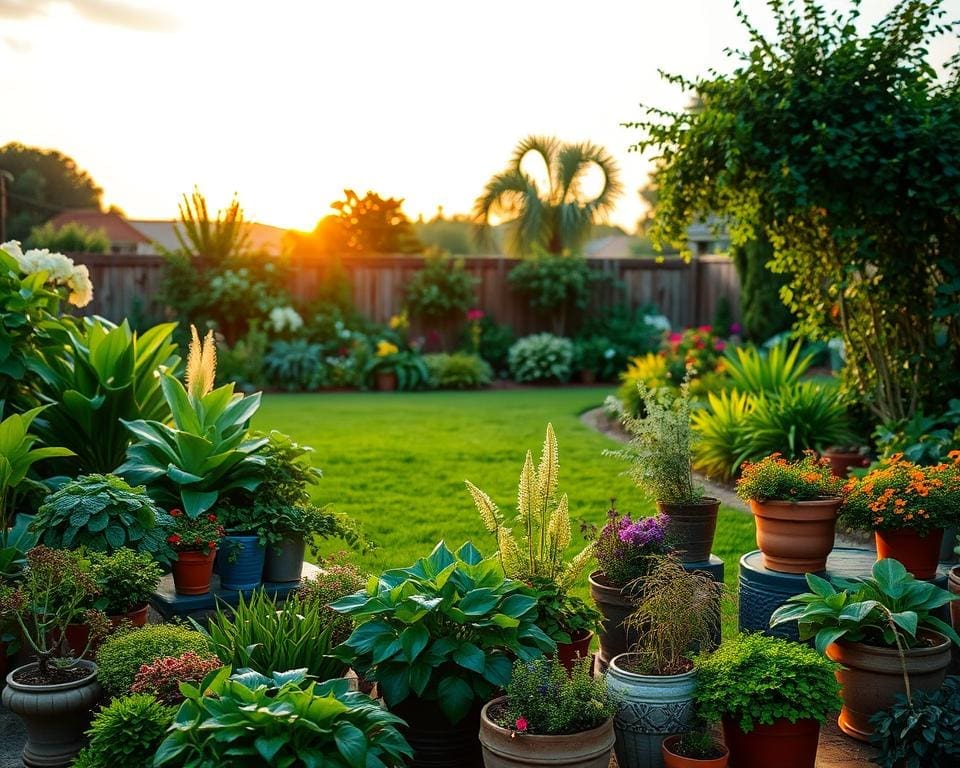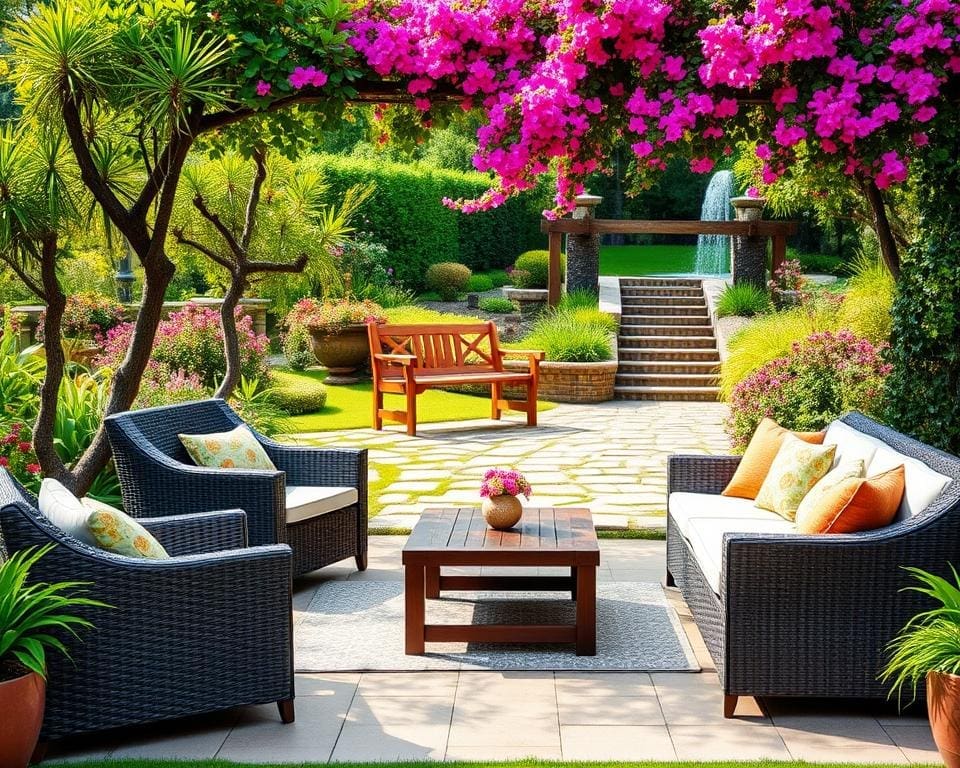In the realm of British garden decoration, selecting the right garden furniture can transform your outdoor space into a serene retreat. Choosing garden furniture that complements your garden’s design not only enhances its aesthetic appeal but also reflects your unique style and ensures comfort. With 2023 trends leaning towards sustainable materials and multi-functional pieces, integrating these elements into your outdoor setup is essential. This guide offers outdoor furniture tips to help you navigate the myriad options available, ensuring your garden becomes a true extension of your home.
Understanding Your Garden Space
To create a harmonious garden environment, it’s essential to perform a thorough garden space assessment. Understanding the physical area at your disposal serves as the foundation for informed decisions regarding furniture and layout. This section will guide you through assessing available space, considering the best garden layout, and identifying sun and shade in gardens, ensuring your outdoor area is both functional and inviting.
Assessing Available Space
Begin by measuring the dimensions of your garden. Knowing the length, width, and any unique features is key to making effective choices. Take into account:
- Access points such as gates and paths.
- Existing plants, trees, and structures that could affect furniture placement.
- The overall size of your garden furniture to ensure it fits comfortably.
A meticulous garden space assessment allows you to visualise how various pieces will interact with your garden’s layout.
Considering Garden Layout
Applying thoughtful garden layout tips can transform your outdoor experience. Arrange furniture to create inviting spaces. Keep in mind:
- The flow of movement through the garden. Ensure pathways remain clear for easy navigation.
- Creating distinct areas for lounging, dining, and play.
- Incorporating focal points, such as a beautiful flower bed or a water feature, around which seating can be arranged.
Strategic positioning not only enhances usability but also elevates the aesthetic appeal of your garden.
Identifying Sun and Shade Areas
Understanding the patterns of sun and shade in gardens is vital for ensuring comfort and enjoyment. Observe your garden throughout the day to note where sunlight creeps into your space. Consider the following:
- Placing seating in spots that receive ample sunlight for warmth during cooler months.
- Designating shady areas for relief on hot days, ideal for relaxing with a book.
- Choosing plants that thrive in specific light conditions to enhance your garden’s beauty.
By carefully identifying sun and shade areas, you can optimise your garden layout for maximum enjoyment throughout the seasons.

How to choose the right garden furniture
Choosing the perfect garden furniture involves more than just picking what looks nice. It requires a thoughtful approach that aligns with your personal style and the overall theme of your garden. Embracing your unique taste while ensuring harmony with the surroundings can significantly enhance your outdoor aesthetic.
Determining Your Style
The first step in garden style selection is recognising the aesthetic that resonates with you. Contemporary designs offer sleek lines and minimalism, perfect for modern spaces. Rustic pieces, with their charm and warmth, create a welcoming atmosphere in natural settings. Vintage garden furniture brings a touch of nostalgia, often complementing older homes beautifully. Identifying your preferred style can set a solid foundation for making informed choices in furniture that not only fits your taste but also feels right within the garden.
Matching Furniture with Your Garden Theme
After determining your style, the next focus should be on garden theme matching. Consider how your furniture selection will blend with existing landscaping, decor, and colour schemes. For a Mediterranean feel, opt for wrought iron or colourful cushions that echo the vibrancy of southern Europe. Urban gardens may benefit from sleek, space-saving designs that prioritise practicality without sacrificing style. Cottage gardens invite comfortable, inviting pieces that enhance their quaint charm. Striving for a cohesive look will ensure your outdoor space feels united and visually appealing.
Material Matters: Choosing the Right Materials
Selecting the appropriate materials for your garden furniture can dramatically affect both aesthetics and functionality. Understanding the benefits and drawbacks of various garden furniture materials can help you make informed decisions tailored to your needs. Here’s a closer look at some primary options.
Wooden Furniture: Pros and Cons
Wooden garden furniture exudes a natural charm that enhances any outdoor setting. Well-crafted pieces often add warmth and style, making them a popular choice. Durability is a notable advantage, especially when using hardwoods like teak or oak, which stand the test of time. Regular maintenance, however, including oiling and sealing, is necessary to prevent weather-related damage and rot.
Metal Alternatives: Durability and Design
Metal furniture, particularly made of aluminium or wrought iron, is known for its strength and longevity. One of the key metal furniture benefits is its resilience in varying weather conditions. Clever designs mean that metal pieces can complement modern garden aesthetics beautifully. While some might argue that metal can feel cold, choosing cushions and fabrics can help create a warmer experience.
Plastic Options: Budget-Friendly Choices
Plastic garden options have evolved significantly over the years. They are lightweight, making them easy to move, and resistant to rust and weathering. For those on a budget, plastic furniture offers versatility without compromising style. While they may lack the luxurious feel of wooden or metal pieces, innovative designs and colour options ensure that there’s something for every garden.
Prioritising Comfort and Functionality
When selecting garden furniture, ensuring comfort and practicality can make a significant difference in your outdoor experience. Incorporating comfortable garden seating into your area will encourage relaxation and enjoyment, while functional outdoor furniture enhances usability and versatility. A careful consideration of these elements provides an inviting atmosphere for family gatherings or quiet evenings alone.
Choosing the Right Seating Options
Comfortable garden seating goes beyond aesthetics. Look for features that enhance the sitting experience, such as supportive backrests, adequate cushioning, and appropriate seat height. Materials play a crucial role in ensuring comfort, with options ranging from plush fabrics to durable yet soft synthetic materials. Prioritising ergonomic designs will allow your guests to lounge for hours without discomfort.
Multi-Functional Furniture for Small Gardens
For those with limited outdoor space, selecting multi-functional furniture presents smart solutions. Consider foldable chairs and tables that can be easily stored when not in use. Benches with built-in storage offer both seating and functionality, making them ideal for small garden solutions. These adaptable pieces enable you to maximise space while enjoying the beauty of your garden.
Maintaining Your Garden Furniture
Effective garden furniture maintenance is essential for ensuring that your outdoor space remains inviting and visually appealing. Regular cleaning is the first step; utilise a soft cloth and mild soap solution for wood, while metal can often be tackled with a damp sponge. For plastic options, a simple wash with water usually suffices. Each material has its unique requirements, so understanding these care techniques is key to prolonging furniture life and enjoying your investment for years to come.
Seasonal storage is also crucial; during winter months, consider bringing in your furniture or using protective coverings designed specifically for outdoor use. This not only wards off the elements but also reduces wear and tear. Furthermore, applying protective oils or sealants to wooden pieces can help preserve their natural beauty, while rust inhibitors are invaluable for metal furniture, providing an extra layer of defence against corrosive elements.
Finally, scheduling routine check-ups to inspect for any signs of deterioration will ensure that your furnishings remain functional as well as aesthetically pleasing. Repairing scratches or dents promptly can prevent minor issues from becoming significant problems. By implementing these garden furniture maintenance strategies, you can enjoy a beautiful outdoor setting that reflects your style long into the future.









